Travelling exhibitions
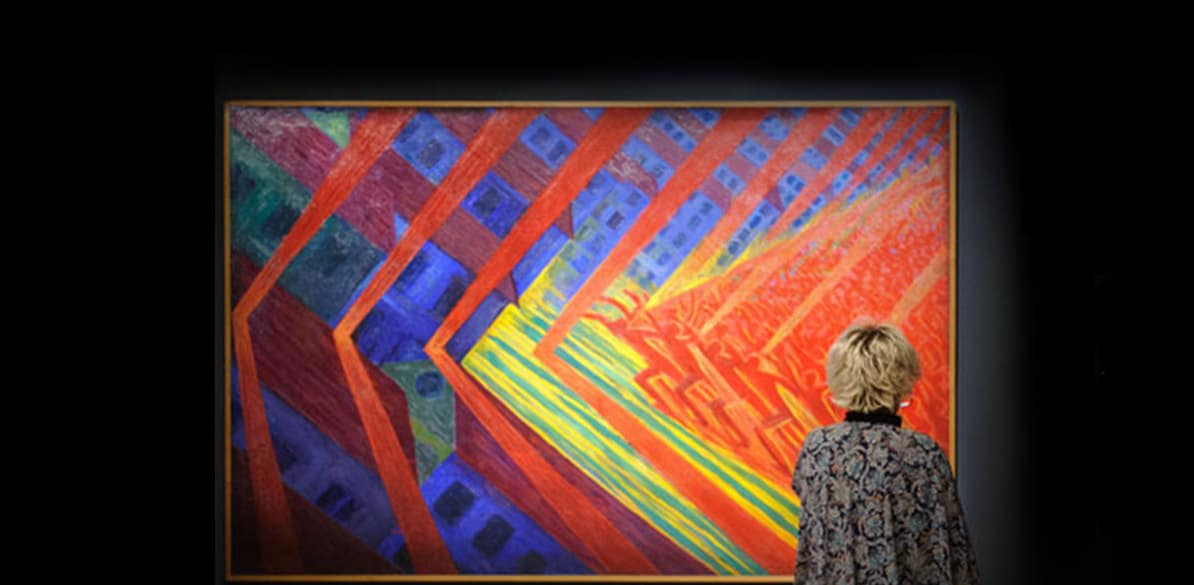
Our exhibition rooms in Madrid and Barcelona are not the only places you can enjoy our photography, drawing, painting and sculpture exhibitions. Once they have been presented in Spain, our idea is that they should be shared far and wide. We want to reach the rest of the world!
Thus the retrospective on Walker Evans headed to Sao Paulo, Stephen Shore to Berlin, Vanessa Winship to Las Palmas de Gran Canaria, the selection of drawings in our collection Hand with Pencil to El Salvador and From Divisionism to Futurism to the Museum of Modern and Contemporary Art of Trento e Rovereto, in Italy.
Part of our program travels to museums and cultural institutions in Europe, North America and Latin America. We want to take art to every corner of the globe. And we hope it reaches you too.
66 exhibitions
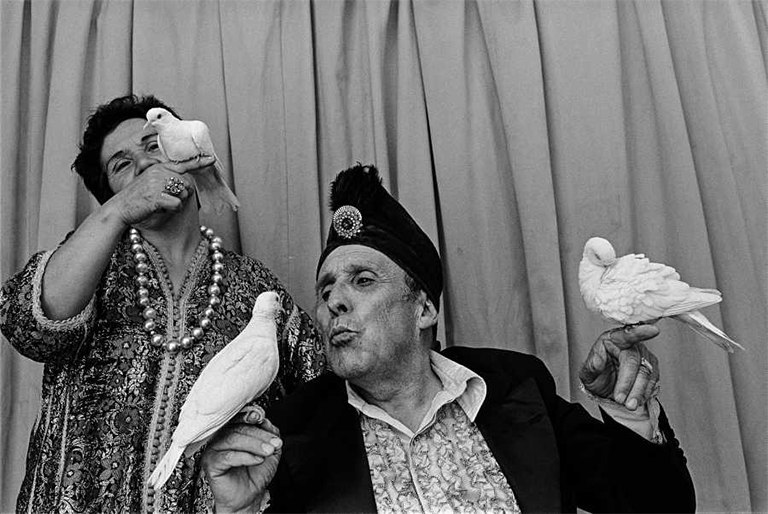
Paz Errázuriz
Mago Karman, Santiago, from the series The Circus, 1988
Fundación MAPFRE Collections
© Paz Errázuriz, courtesy of the artist
PAZ ERRÁZURIZ
–
Museum of Fine Arts, Santiago, Chile
Self-taught, committed and unconventional
Fascinated by photography from an early age, it was in 1972 when Paz Errázuriz (born in Santiago, Chile, 1944) began training herself as a self-taught photographer. From that moment her photography was a product of the period of Chilean history through which she lived: the fall of Salvador Allende’s Popular Unity government in 1973 and the establishing of Augusto Pinochet’s dictatorship which lasted until 1990.
Paz Errázuriz found that photography was the best way to defend the human rights of those who were excluded by the regime and by society. She fixed her attention upon those who, due to their appearance or circumstances, formed a marginalized and entrapped society: the mentally ill, the homeless, circus performers, transsexuals, prostitutes and indigenous natives. The black and white shots and the anonymous faces of misfit Chileans became a voice of condemnation of the regime.
She is a photographer who works with difficult and uncomfortable subjects, giving no concessions whatsoever to the viewer. The results of her unconventional way of exploring reality are the impactful photographs she has taken over more than four decades.
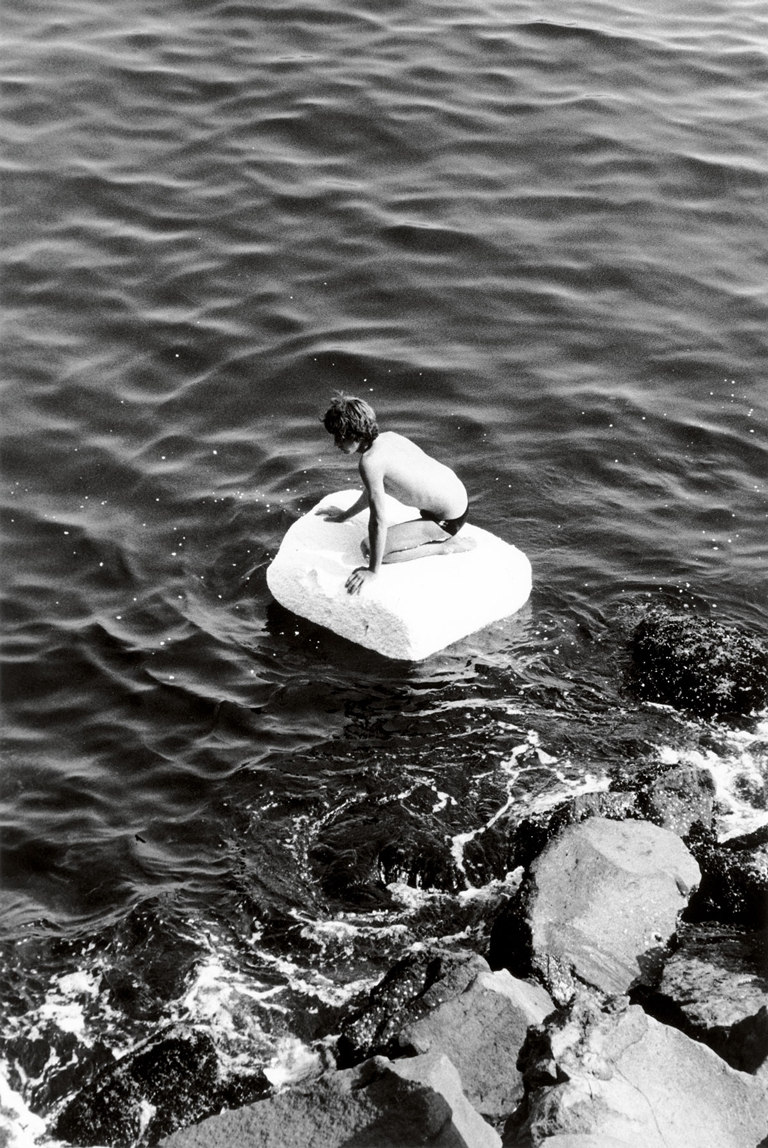
Peter Hujar. Boy on Raft, 1978
The Morgan Library & Museum, The Peter Hujar Collection.
Acquired thanks to The Charina Endowment Fund, 2013. 108:1.97.
© The Peter Hujar Archive, LLC. Courtesy of Pace/MacGill Gallery, Nueva York, y Fraenkel Gallery, San Francisco.
PETER HUJAR. SPEED OF LIFE
–
Intimacy. Audacity. Encounter.
“I can express myself only through photography”. These words of Peter Hujar, an artist with a reserved nature, define a career which reflects an entire era, from the fifties to his death in 1987, and which can be seen in this exhibition of more than 150 works.
Peter Hujar was born in Trenton, New Jersey, in 1934 and grew up in the countryside until his mother took him to live with her in Manhattan when he was 11 years old. From this point onwards his life and his work were intimately linked to Downtown New York, where he shot portraits of artists he knew and respected such as Andy Warhol and Susan Sontag as well as other anonymous figures of the New York scene.
For Hujar, the encounter with the other person was of vital importance, namely the relationship between the artist and the person being portrayed, which would allow for the person to be captured by his camera in a natural way. His portraits reflect an atmosphere of intimacy with the person being photographed due to his way of taking photographs calmly and closely.
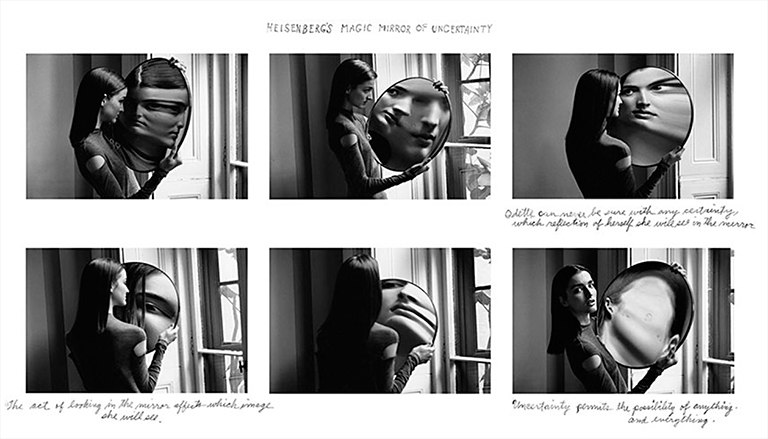
Duane Michals, Dr. Heisenberg's Magic Mirror of Uncertainty, 1998
Sequence of 6 copies in silver gelatin with handwritten text. Courtesy of DC Moore Gallery, New York © Duane Michals
DUANE MICHALS EN TURÍN
–
“When you look at my photographs you are looking into my mind”. These words of DUANE MICHALS hold the key to understanding his work and his philosophy on life.
Michals is one of the most prestigious names in North American avant-garde photography. Born in McKeesport, Pennsylvania, in 1932, he continues creating to this day, at 85 years old, inventing forms and using new resources to communicate his feelings in the most precise way possible.
This original artist maintains that he was lucky never to have studied photography, as this enabled him to distance himself from the self-imposed norms of traditional photography. He is currently recognized as one of the artists who has done most to thoroughly renew the language of photography over recent decades.
Michals believes that the limitations of an individual image are insufficient to express its inner being. To overcome these limits he employs series, sequences through which he constructs a story, including handwritten texts on the developed copies.
An artist that hovers between photography, painting, theater and writing, Michals seeks to photograph, precisely, what cannot be seen.
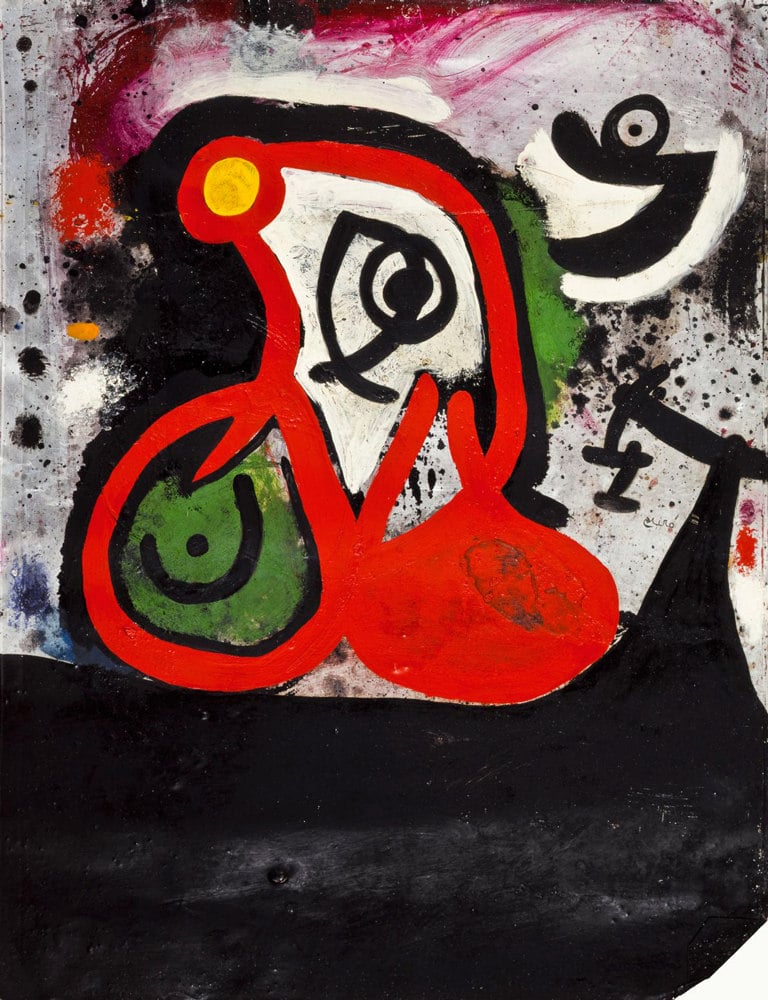
JOAN MIRÓ
[Woman, bird], 1970
Oil on zinc
Private collection in temporary storage
© Successió Miró 2018
PICASSO & MIRÓ. THE FLESH & THE SPIRIT
–
Grandmaster´s Palace, Valetta, Malta
It was a tribute in waiting to link the two great masters Picasso and Miró, through works held in our collections, comprising some of the Joan Miró works lodged with us and the Vollard Suite by Picasso. The carnality of Picasso and the spirituality of Miró come together in this show, allowing us to appreciate how Picasso was able to renovate art, basically through line drawings and sketches, while the most striking quality of Miró is his use of color and the intensity with which he manipulates it. These are the elements that stand out most in the works we have chosen from both masters, and the meeting we have engineered between them.
This exhibition forms part of the events relating to “Picasso- Mediterranée” one of the most important initiatives organized around the figure of Picasso, in which over fifty institutions from all over Europe are involved. The idea behind it is to highlight the relationship that the artist from Malaga had with the world of the Mediterranean. Organized thanks to the initiative of the Musée Nationale Picasso-Paris, the program explores the artist’s creations and the places that inspired him, giving rise to an unparalleled cultural experience.
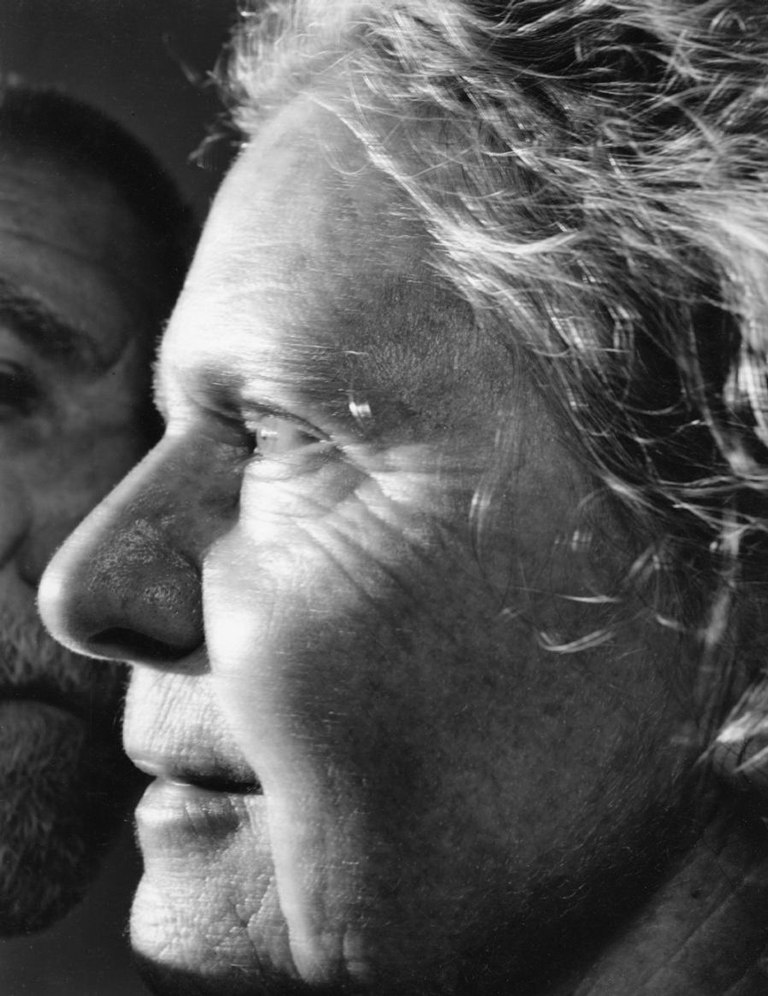
Bebe, Savignac de Miremont, 2011
Gelatin silver prints, contact
© Nicholas Nixon.
Fundación MAPFRE Collections.
NICHOLAS NIXON
–
Andalusian Center of Photography
Delicacy. Precision. Soul.
Nicholas Nixon is without doubt one of the leading figures of contemporary photography. His work is characterized by his ability to capture the very essence of his subjects combined with impeccable technique, which requires working quite slowly in an age identified with speed, a factor that makes his portraits unmistakable. After presenting in Madrid the first ever retrospective in Spain of his work, our exhibition is now coming to the Andalusian Center of Photography. The show, comprising over 200 of his works, ranges from his first city views in the 1970s up to the famous series of The Brown Sisters. The elderly, the sick, the intimacy between couples and the family are just some of the themes that have captivated the artist throughout his career.
However, his greatest contribution to the history of photography is the series The Brown Sisters, a work in progress that still continues, inescapable and present in our collection, a series that has become one of the great icons of 20th century photography.
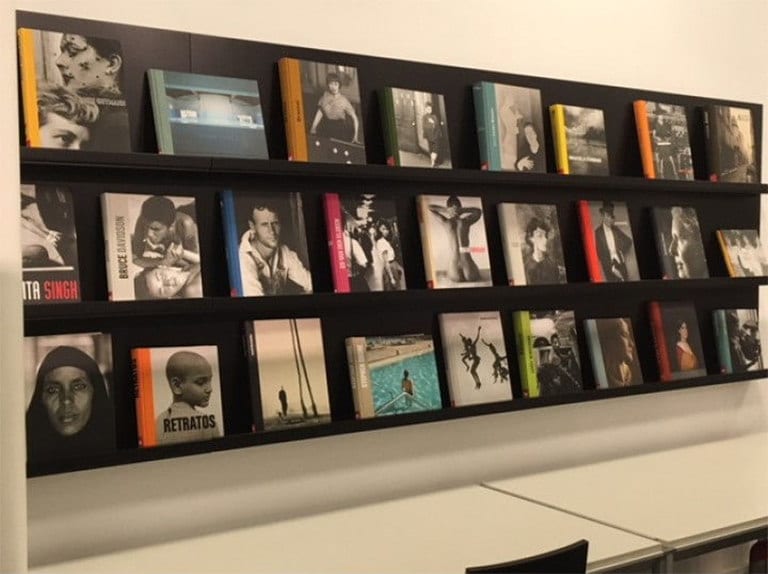
THE FUNDACIÓN MAPFRE PHOTOGRAPHY BOOKS
–
Andalusian Center of Photography
Julia Margaret Cameron, Ed Van der Elsken, Duane Michals, Graciela Iturbide, Peter Hujar, Bruce Davidson, Hiroshi Sugimoto, Paz Errázuriz, Paul Strand and Garry Winogrand are just some of the great photographers we have featured in our program of photography since 2009.
Each exhibition is accompanied by a publication which, in addition to complementing the show, becomes a bibliographical point of reference on the work of the artist. In the realm of photography, Fundación MAPFRE has become an international authority, and all of the books published provide us with an important overview of the current photographic landscape, with monographs on the great masters of the 20th century and the established figures of contemporary photography.
The Andalusian Center of Photography now provides us with the opportunity to see these publications gathered together, revealing the work of great photographers: from Brassaï, whose work can be seen in our exhibition hall in Barcelona, through to Anna Malagrida via Walker Evans, Stephen Shore, Cartier Bresson and Fazal Sheikh among others.
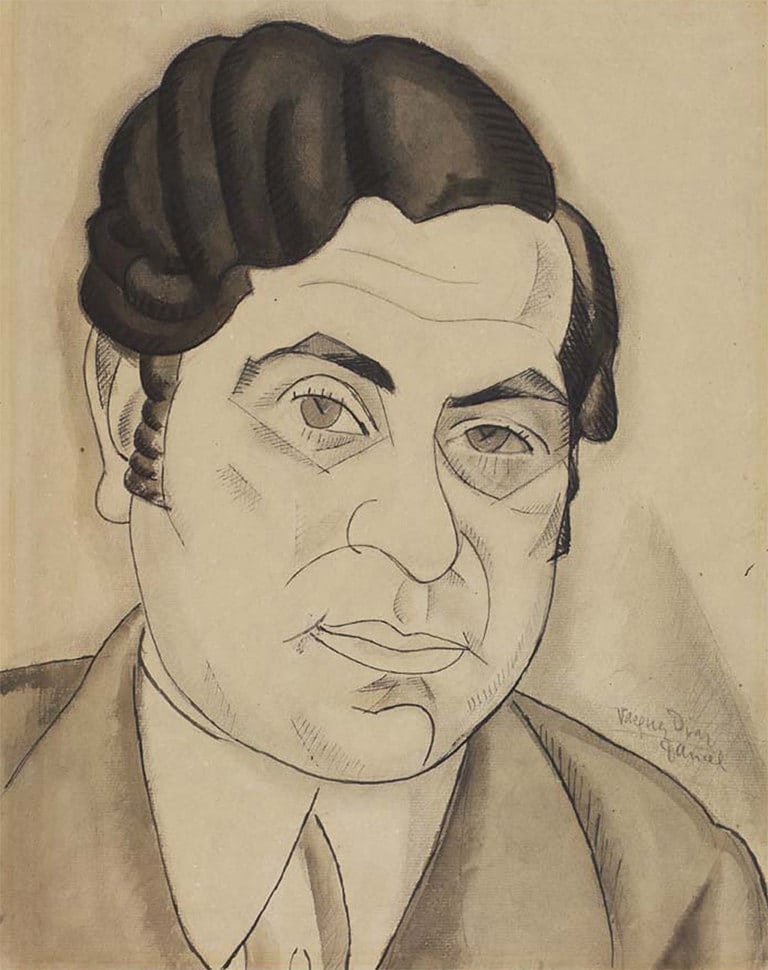
Ramón Gómez de la Serna c.1923
Ink over paper.
Fundación MAPFRE Collections
VÁZQUEZ DÍAZ IN THE COLLECTIONS OF FUNDACIÓN MAPFRE
–
La Laguna-Tenerife. Fundación MAPFRE Guanarteme
Ever since it started its collection, Fundación MAPFRE has tried to favor the work of those artists that are essential to exploring the modernization process in Spain. It is complex and eclectic modernization, in which the traditional coexists with the avant-garde as does the cosmopolitan with the purely Spanish.
Daniel Vázquez Díaz (Nerva, Huelva, 1882 – Madrid, 1969) contributed to this dialectic through his work and became, along with José Gutiérrez Solana (1886 – 1945), one of the most representatives figures of this fertile and complicated period of Spanish art. This artist is one of the most representative eminences of the Spanish art world from the first half of the 20th century.
The seventy drawings on display in this exhibition, which form part of the Vázquez Díaz collection owned by Fundación MAPFRE, present an iconographic gallery that captures for posterity the essence of a specific era, providing the spectator with a broad vision of Spain in the 20th century.

Peter Hujar. Boy on Raft, 1978
The Morgan Library & Museum, The Peter Hujar Collection.
Acquired thanks to The Charina Endowment Fund, 2013. 108:1.97.
© The Peter Hujar Archive, LLC. Courtesy of Pace/MacGill Gallery, Nueva York, y Fraenkel Gallery, San Francisco.
PETER HUJAR. SPEED OF LIFE
–
Cultured. Combative. Private.
Peter Hujar (Trenton, 1934-New York, 1987) was, above all, a great portrait artist – of his times, his friends and of the New York that he knew, experienced and lived in. His work traces the landscape of an era that ran from the 1950s through to his death. Through over 150 examples of his photos, we were able to get to know his work in Spain, and now he’s going home.
An active member of the counter-cultural movements of the time, he captured the reality of 1970s New York and portrayed the sociocultural scene with his camera. Artists and writers such as Andy Warhol, Susan Sontag and William S. Burroughs were caught by his lens, just like many of the anonymous Downtown characters of the time.
The vital thing for this photographer, of Anglo-Saxon descent, was connecting with others. Determination and discovery, establishing a rapport between the artist and his subject that allowed him to expose the true nature of anyone captured by his camera.

Duane Michals, Dr. Heisenberg's Magic Mirror of Uncertainty, 1998
Sequence of 6 copies in silver gelatin with handwritten text. Courtesy of DC Moore Gallery, New York © Duane Michals
DUANE MICHALS
–
Duane Michals (McKeesport, Pennsylvania, 1932) is 84 years and as creative as ever: taking photographs and inventing techniques that help fulfill his need to express himself..
This retrospective is arranged in successive stages in order to demonstrate the different expressive methods gradually developed by the photographer, as well as the various series produced on specific subjects over the course of time.
Floating between photography and poetry, Michals is one of the most prestigious figures of the American avant-garde movement. In the sixties, he created a new approach to photography, that did not set out to document facts or “truth”, but to deal with metaphysical aspects of life. Through very personal work of extraordinary originality, Duane Michals has managed to blur the lines between photography and other disciplines, such as poetry and painting. He has proved to be one of the artists who has done most to revolutionize the language of photography over the last sixty years.
Independently of his chosen medium or subject matter, Duane Michals’ personality, concerns and his sense of humor infuses his entire output.
